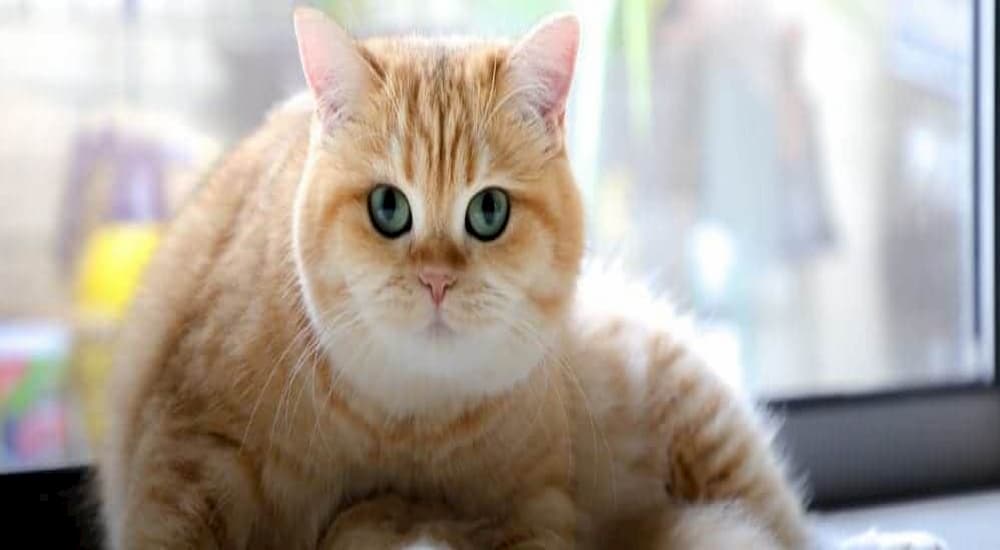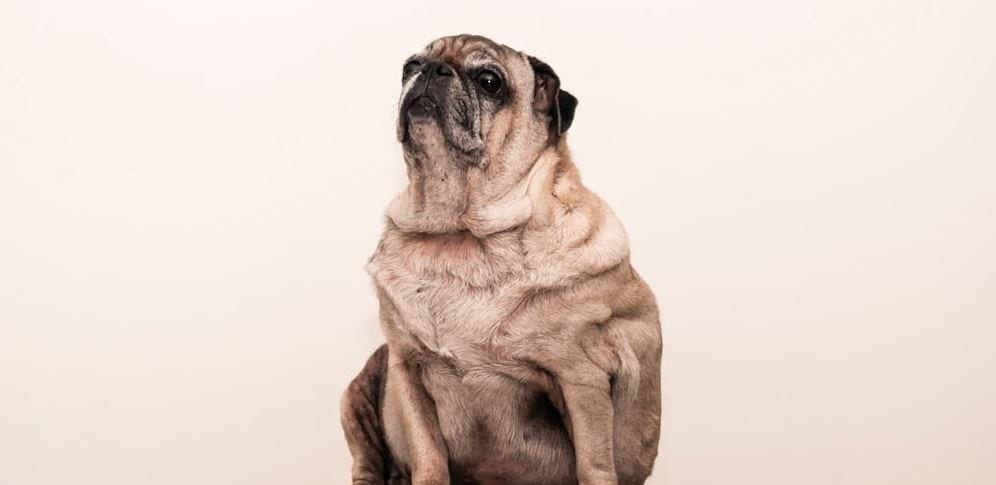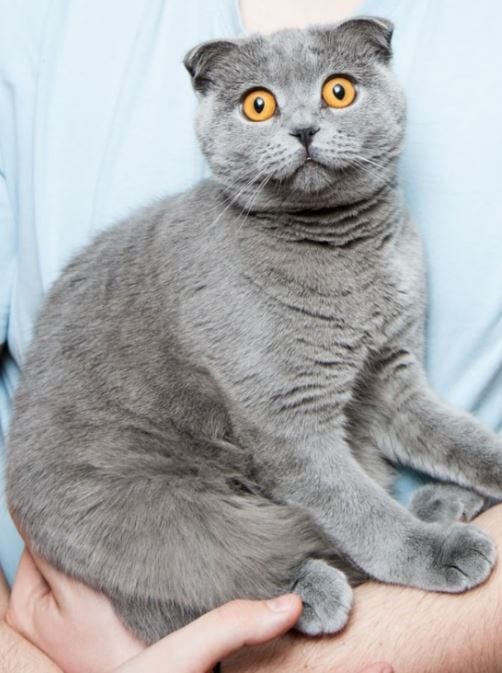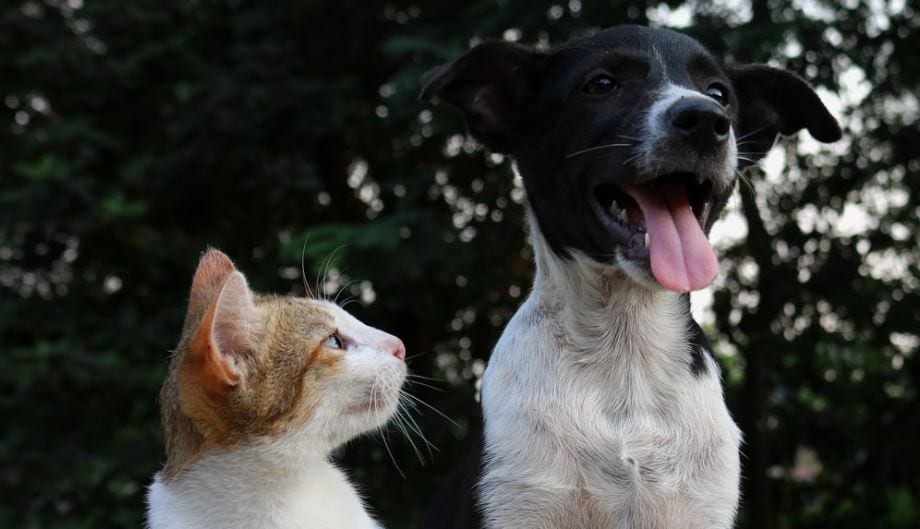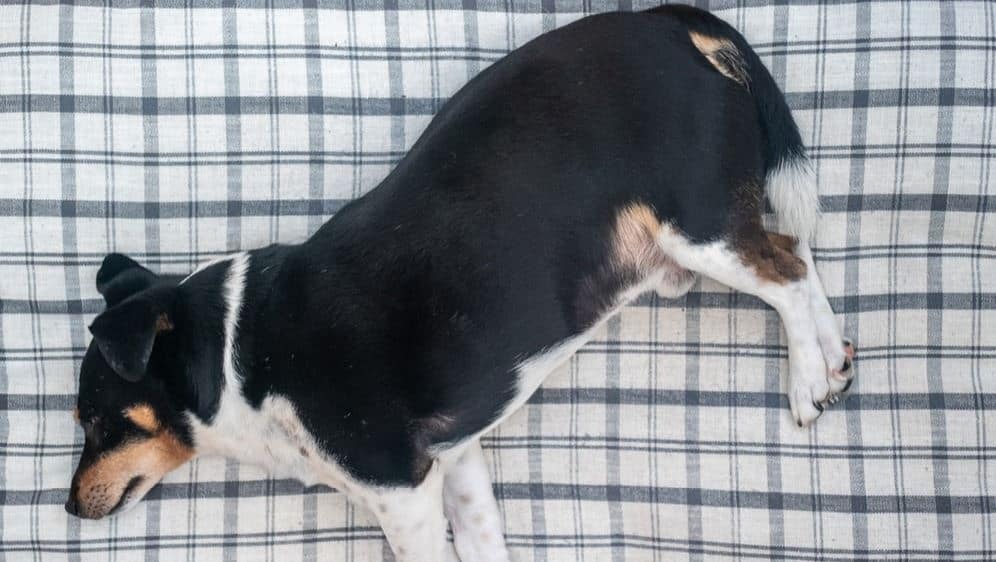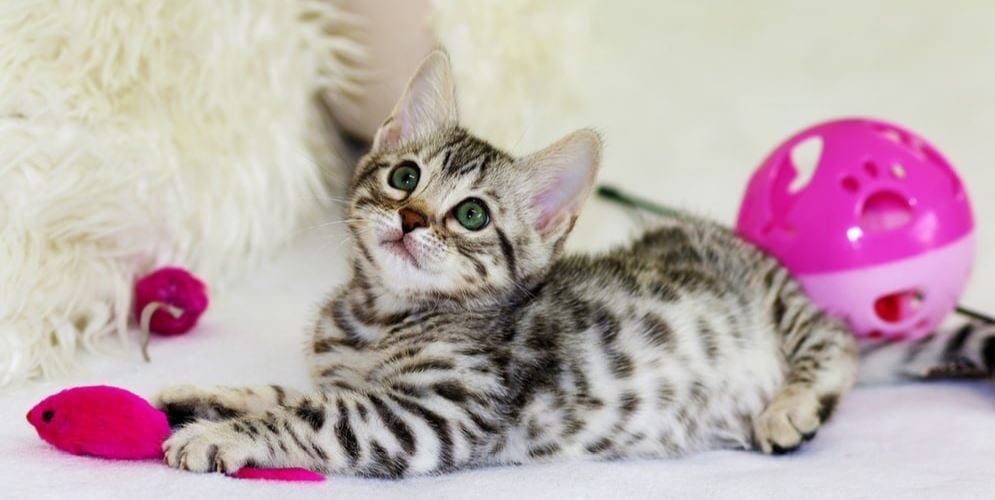We all want to feel like we’re taking good care of our furry friends. They’re not just pets; they’re our family. And when they give us that look, some of us can’t help but give them an extra treat to show our affection.
But in 2018, about 60% of cats and 56% of dogs in the United States were overweight or obese, according to the 2018 Association for Pet Obesity Prevention survey.
National Pet Obesity Awareness Day, which falls on October 9, 2019, this year, serves as a reminder that too much of a good thing can have detrimental health effects on the ones we love most.
What exactly do a few extra pounds mean for our loved ones? To educate ourselves and our readers, we contacted Dr. Keith Norberg from Danada Veterinary Hospital in Wheaton, IL, to answer some of our most pressing questions
Q: How can you tell if your pet is overweight? What are some indicators to look for?
A: Usually, we do something called a Body Condition Score, where we take a look at their overall frame. It’s not really about their weight but how they fit in their body. Typically, for a dog’s ideal body weight, we look at the rib cage. We should be able to feel the bones but not see them, and in their midsection, they should be tapered inward kind of like an hourglass. Then, their waist should be tucked in underneath their bellies. If we have that, we consider that a perfect frame. If they’re overweight, they’re going to be more squared off, so basically that curvature that we look for is more like a straight line, kind of like a hot dog essentially. If they’re bulging or if they have more of an outward curve, then they’re obese, so we put a percentage to their body. Usually, 10% overweight is going to be a squared-off look (with a 6-7 Body Condition Score out of 9). The obese dogs are at least 20% overweight (with an 8-9 Body Condition Score out of 9).
Cats are a little bit different. Similar, but they don’t tend to get that real sleek inward curve. They’re a little bit more squared off, and that’s just differing levels of bulging. They tend to sag in their midsection and have a little bit of a fat pad over their ribs.
Q: Some owners feel like their animals being a few pounds overweight isn’t that bad. What should those owners know?
A: I would say that we use the body classification system specifically for that reason. Hills’ 5 point scale:
- severely underweight
- thin and slightly underweight
- ideal weight
- slightly overweight
- obese
Purina’s 9 point scale:
- 1-3 :Too Thin
- 4-5 :Ideal Weight
- 6-9 :Too Heavy
Basically, a 5/9 is ideal, and a 7/9 is overweight. I do half points. I do a 5 point scale, but essentially I have a 9 point scale myself. The 3 ½ means, “Yeah, they could use a little bit of weight loss, but they’re probably not overweight to the point of causing any health issues.” So those dogs have a little bit of loss of taper, but I can still see it. Those dogs are probably 5% overweight. They probably don’t have any risk of a higher level of health disease. It might be hard on the joints if they have arthritis or something like that, but I’ll coach those owners that, “Hey, your dog could stand to lose a little bit, but you don’t have to worry about it too much.” Versus you get a dog that is 20% overweight. Those dogs can die from their weight. They can get high blood pressure. They can get orthopedic issues like arthritis. They can develop heart disease.
We see a lot of fat cats with urinary issues. Diabetes is one of the most common ones that is tied to a pet’s weight. There are obvious adverse effects, but it depends on how overweight they are.
Q: You mentioned diseases associated with being overweight. Can you expand on that?
A: Diabetes is very common. Orthopedic issues are the number one thing people overlook. There have been studies done in big dogs that show the level of pain reduction they get from losing 10% of their body weight is equal to the amount that they can get from taking a pain reliever. So, we coach owners of animals who have sore joints or have difficulty getting around as they get older to diet them and get their weight down 5 pounds.
For a 50 pound dog, 5 pounds overweight is 10%. So if you get them down from 50 to 45, you’re going to have an improvement in their pain levels and their pain tolerance, just as much as medicating them. Obviously, it’s a lot safer not to have to medicate a dog regularly for the rest of their life. As they get older, organs may not work as they used to, and those organs are necessary to metabolize drugs.
In cats, we do feel like there is a link between urinary disease and being overweight. We see a lot more urinary blockage in cats that tend to be overweight. It can happen in lean cats too, so it’s not the only factor, but there is an overabundance of it in fat cats.
In dogs, we see high blood pressure. That is a really difficult subject for us. It’s a disease that doesn’t have a ton of outward symptoms. So, we have more difficulty convincing owners to check blood pressure. But if they have high blood pressure, they can die from heart disease.
They can have a stroke. You may see no symptoms until that happens. Whereas if we catch it early, or we control it by managing weight, then you don’t have as big of an issue going forward. Those would probably be the biggest things that we deal with.
Q: What is a rough percentage of dogs and cats that come into your office overweight?
A: More than the owners think. So, I can speak for my own clients; I would say that the vast majority of cats that we see are at least overweight. A good number of them are obese. I feel like dog owners nowadays are a little more attuned to it than they used to be. It’s still probably at least 30-40% of what I see, if I’m really scrutinous, are a little bit overweight.
I don’t see as many morbidly obese dogs as I do cats. Cats are very sedentary. They tend to probably not get focused on as much by their owners when they’re at home because they’re pretty self-sufficient. They’re not getting walked every day. They’re not interacting with the owners. We joke that dogs have owners and cats have servants because they come to the owners when they need something. Even my own cat, who I’m pretty in touch with, I don’t sometimes see for the majority of the day. He hangs out and hides. It’s very easy for them to get missed.
Q: Why should people bring their overweight pets to the vet for dietary plans instead of trying to fix the problem themselves by going online or using other resources?
A: First of all, there’s no over-the-counter diet that is designed for weight loss. Way too many people out there think there is. Every diet you buy in the store is designed for maintenance or growth. Even weight control or light formulas are designed for weight maintenance. They’re going to be a normal maintenance level of protein. They’re not going to have the types of things in there that are going to help satiate a patient to make them feel full as they’re eating. Not to say that you can’t get a dog to lose weight with over-the-counter foods, but you do run the risk of feeding a diet that is deficient for weight loss needs.
Vets are going to know exactly how many calories you need to be feeding your pet to get to a specific weight. That’s based on formulas that we’ve known for years of what an animal should be able to burn daily. We can talk to them about the importance of exercise. It’s a concept that most people don’t quite understand because the number of calories that our dogs and cats are taking in is so much less than ours, so just a little bit of activity can make a big difference.
I think the biggest thing is that it’s a team effort. It’s not something that anybody really wants to do alone, or should be going at it alone. If you’re researching the subject online, you’re not going to have feedback. You’re not going to see the pounds fall off in a week. It’s usually a 4-6 month ordeal if you’re trying to get 10% of their body weight down. It’s not something that you’re going to see instant results on. I think a lot of people if they’re doing it themselves, will get bogged down and say that it isn’t working.
Q: If I put my pet on a diet, how will I know when to stop?
A: Typically, when they get to that ideal body condition. As you get closer, it’s harder for them to lose the last few pounds, just like with humans. I usually encourage people, if you’re putting them on a diet, reweigh them about every 4-6 weeks. It’s a good enough time frame where you can see some tangible improvements, but it’s also not long enough that, if you’re going in the opposite direction, you let too much time go by.
Sometimes there are quirks about animals’ metabolisms that can get in the way, or the mathematical formulas don’t work, or the composition of the diet isn’t right, and we have to make adjustments. So, I usually tell people to weigh every 4-6 weeks. Once we get down to a range where we’re close, the beautiful thing is, just like with humans, the metabolism revs up. It’s easier to keep your weight off than to get it off in the first place. Once you get down to a pretty decent amount, you can start to feed them more, and they can actually keep weight off.
Q: How many times would you recommend feeding your dog or cat a day?
A: That’s part of the individualization of this. If you’ve got an animal who is absolutely ravenous for food, then feeding smaller meals more often can trick them into thinking that they’re getting more food. Let’s say you have an animal that eats a cup of food a day. Are they going to know the difference between two half-cups and three third cups? Or, are they going to notice the difference between two meals and three meals. They’re probably going to be more satisfied by the three slightly smaller meals. I generally recommend smaller portion sizes more often.
Tips on getting your pet to exercise from Dr. Norberg:
Does your pet not want to exercise? Use food as motivation!
- Toss your dog’s food across the room. Make them do laps. They’ll burn a few extra calories.
- Put a cat’s food up on shelves and cabinets. Make them have to jump and climb for it!
- If you have multiple levels in your house, put food on each level.
- Try a feeding ball!
Q: For weight loss and health in general, what type of food would you recommend? Dry, canned, raw?
A: I don’t use raw food primarily. It has nothing to do with nutrition. You get the same risks as you would with raw anything. There could potentially be bacteria and stuff like that in there. I think that there are a lot more commercial raw diets out there now that have addressed some of those issues. They can control some of the manufacturing. There’s no benefit to it in terms of science. It’s a lot of anecdotal information that suggests it’s better. Usually, breeders that have used it swear by it. If an animal is doing okay on it, I don’t change their diet.
For weight loss, I usually aim for high fiber diets, and the highest protein content the animal can tolerate. You need to feed the muscle to make sure that the body doesn’t feel deficient. That’s where most maintenance diets fall short. Maintenance diets might have 25% or 30% protein, which is normal. That’s what your body needs. For weight loss, you need to be able to have that maintenance level plus some extra to fuel your body mass.
Typically, I recommend either a weight-loss formulated diet, which are the prescription weight loss foods. Those are going to have extra amounts of protein in them. Or I recommend wet dog food or wet cat food. Most of that is going to be protein and water. There’s not as much filler because they don’t put the grain in there. They’re not forming a kibble. In essence, a kibble is going to be a little bit of protein that is bound together with some sort of grain. Even if it’s grain-free, they’re going to use other carbohydrate sources to bind together. Then, they’re going to coat that in fat to make it tasty. Kibble is going to have less of the building blocks the animal needs for metabolism than wet food. So, I usually shoot for that if I can.
The cool thing about prescription diets is the ones that we use for weight loss have equal or more protein in the kibble as they do in the wet form. It’s the exact opposite of what you expect. The fiber makes them feel full faster. It’s like eating a bunch of bread before your meal comes at a restaurant. You just don’t feel as hungry. It makes those animals who are living for food more satiated.
If your pet is a “little overly loved” as Dr. Keith Norberg says, don’t worry. It’s never too late to change their lives. Go to your vet and start a dietary plan for your beloved family member. Your vet wants your furry friends happy and healthy as much as you do. To read more about pet obesity, check out our previous blog post.
Have you considered saving money on vet visits with dog or cat insurance? Get your pet’s free quote with Prudent Pet today in just a few clicks.

